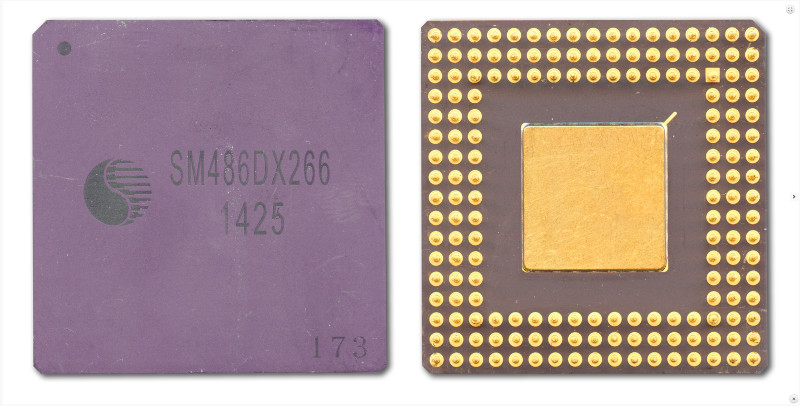It’s common enough for integrated circuits to be available from a range of different suppliers, either as licensed clones, or as reverse-engineered proprietary silicon. In the case of a generic circuit such as a cheap op-amp it matters little whose logo adorns the plastic, but when the part in question is an application processor it assumes much more importance. In the era of the 486 and Pentium there were a host of well-known manufacturers producing those chips, so it’s a surprise decades later to find that there was another, previously unknown. That’s just what [Doc TB] has done though, finding a 486 microprocessor from Shenzhen State Micro. That’s not a brand we ever saw in our desktop computers back in the 1990s.
Analysis of a couple of these chips, a DX33 and a DX2-66, shows them to have very similar micro-architecture but surprisingly a lower power consumption suggesting a smaller fabrication process. There’s the fascinating possibility that these might have been manufactured to serve an ongoing demand for 486 processors in some as-yet-unknown Chinese industrial application, but before any retrocomputer enthusiasts get their hopes up, the chips can’t be found anywhere from Shenzhen State Micro’s successor company. So for now they’re a fascinating oddity for CPU collectors, but who knows, perhaps more information on these unusual chips will surface.
Meanwhile we’ve looked at the 486’s legacy in detail before, even finding there could still just be 486-compatible SoCs out there.
















“Analysis of a couple of these chips, a DX33 and a DX2-66, shows them to have very similar micro-architecture but surprisingly a lower power consumption suggesting a smaller fabrication process.”
Cool, these were most important 486es in the DOS and multimedia era.
33 MHz was the reference clock frequency of the very long bus. ;)
It’s funny how I instinctively think of a 486DX2/66 as a fast CPU, due to when my brain’s CPU Awareness Unit was installed. At the time it seemed like a big deal, but other than historical reēnactment, I guess that part is literally useless now.
Well, it certainly wasn’t “slow” either. The 486 with VGA did beat the AMIGA, after all.
Performance was good enough for playing back Movie CDs and QuickTime video. And FMVs in games, too.
Sadly, not few 486 PCs did suffer from having 4 MB of RAM in multi-tasking environments,
as well from having motherboards that only have ISA slots (no PCI, VLB, OPTI bus, MCA or EISA).
A 486 CPU with write-back cache, a motherboard with 256KB L2 cache, VLB graphics/VLB IDE and 16MB of RAM could really fly.
The extra memory was really good for HDD and CD-ROM cache (smartdrive) and for avoiding memory fragmentation, too.
Windows 3.1 and OS/2 ran comparatively smoothly with 16 MB.
Having lots of contiguous memory to work with really made a difference, especially on 3.1x.
Lots of memory also allowed having multiple instances of WIN-OS/2 running on OS/2 or NT, enhancing multi-tasking experience a lot.
Amiga lost because their marketing was piss poor. Amiga would run 486 bridge card at comparable speeds to the dx33. Ahh megahertz and not gigahertz, system coding had to be lean to run fast … Something AI could get us back to.
I must be older than you. My brain’s CPU Awareness Unit thinks a 4MHz Z80A is fast, having gone from the original 2.5MHz Z80.
I have seen that part in my ejunk or at least one with the same color, they feel and sound like stone.
A trap?
We are learning that ARM upgrade in M series required to avoid disappearance of registers. :(–+
Either upgrade ARM or force expensive software mods?
What do hackaday readers know?